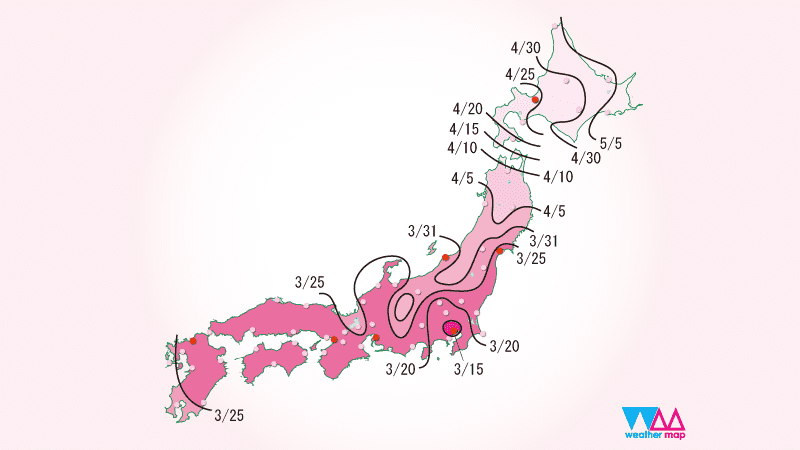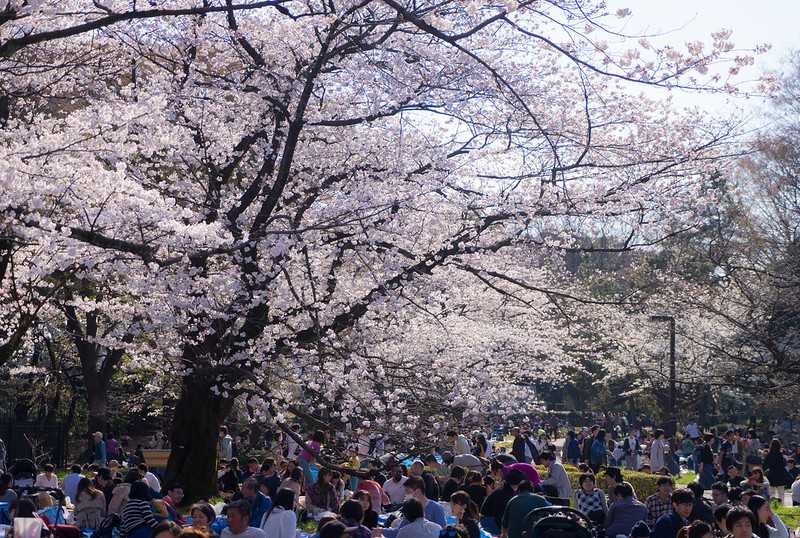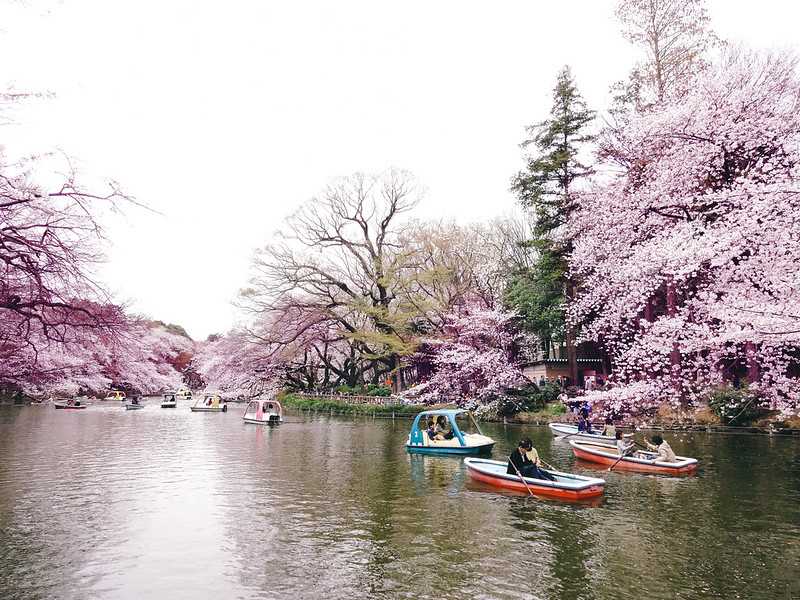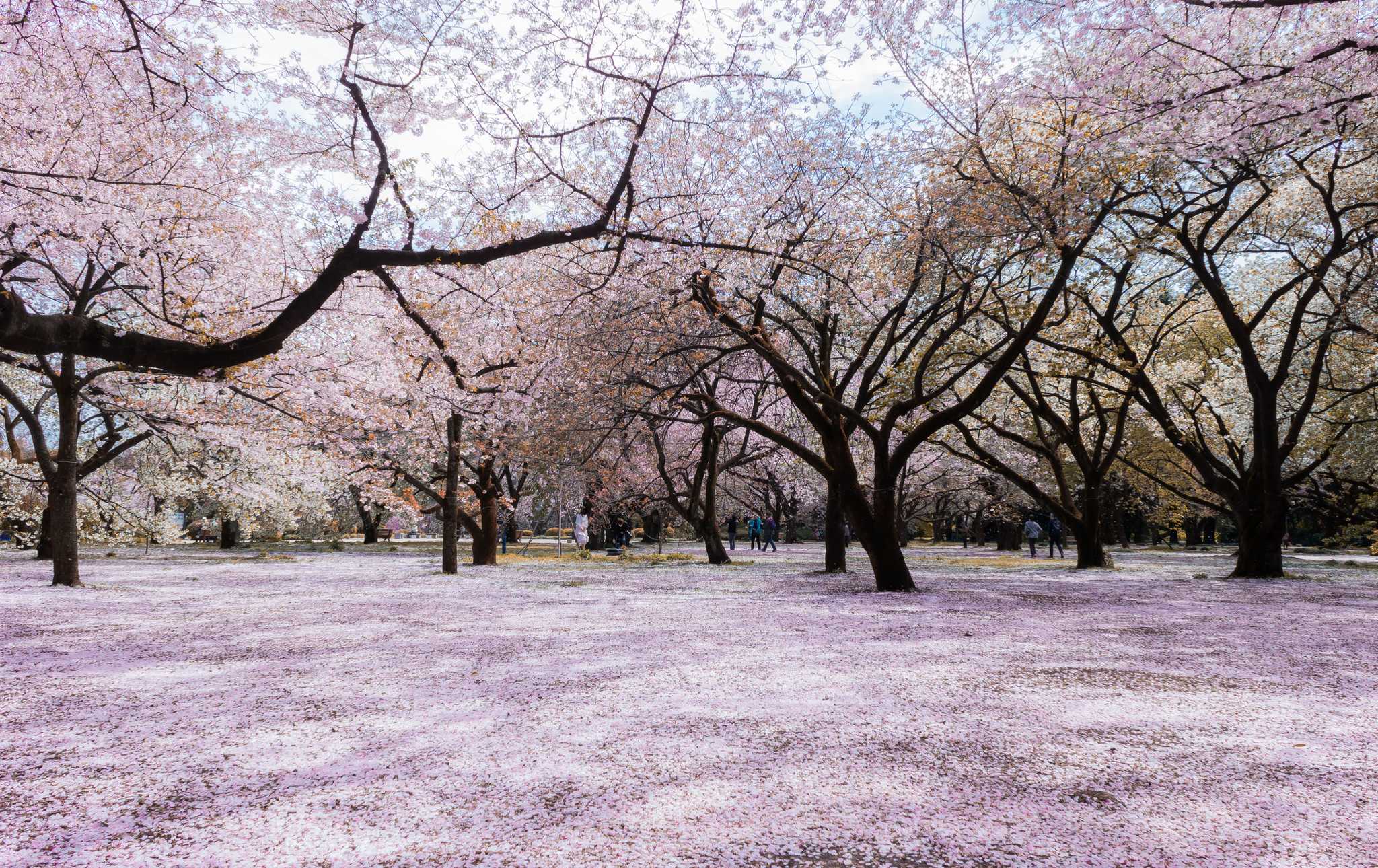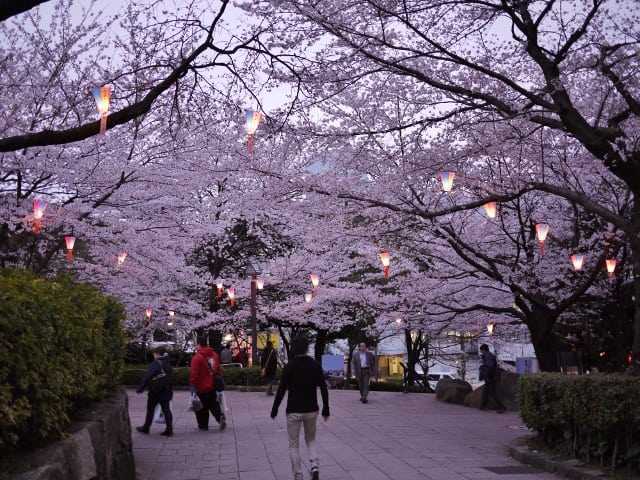Guide to Hanami in Tokyo: The Best Parks, Times and Tips
See COVID-19 Note for each park below
What is Hanami?
Lucky enough to be visiting Tokyo when the sakura (cherry blossom) is in bloom around the end of March and start of April? At this time of year, local parks across Tokyo transform into buzzing hubs as friends, families, couples and colleagues enjoy the traditional custom of hanami (sakura viewing). With its short life-span, cherry blossom has become a symbol of the transient beauty of nature in Japan, and appreciating this during hanami involves picnicking beneath the cherry trees, relaxing and enjoying the falling blossoms.
If you want to do your own hanami, there’s no need to do much prep in advance, and you don’t even have to travel far from the city centre to enjoy Tokyo’s lush green spaces. Read on to find out tips on how to hanami like a local and discover all the most popular, picnic-friendly parks in the capital.
When to Hanami?
First bloom in Tokyo is predicted for March 15, with the peak predicted around March 23. You’ll still be able to enjoy hanami up until early April. However, some parks, like Shinjuku Gyoen National Garden, have many varieties of cherry trees that can bloom for longer. You can check updates on the forecast here.
How to Hanami
Enjoying hanami is very simple. It essentially involves bringing snacks, picnic food and drinks to a park and setting up camp with a picnic mat. While you might see some families armed with cooler bags, thermos flasks, homemade bento, games and all the picnic paraphernalia you can imagine, it really isn’t essential and most people just stop by a combini or supermarket to pick up snacks and drinks as they’re on their way to the park.
Combini and supermarket snacks
At this time of year, Japan’s combini (convenience stores) and supermarket shelves boast all kinds of sakura-themed products. There’s everything from Mini Sakura Green Tea KitKats to sakura-flavoured mochi (Japanese rice cake) and sakura onigiri (Japanese rice ball). There’s also plenty of other cheap and tasty choices, like pre-made bento boxes, takoyaki (octopus balls), karaage (fried chicken) and more. If you’re going to a park that allows alcohol, you can also find a selection of cheap drinks here, so grab yourself a can of Strong Zero chuuhai (a refreshing highball cocktail made with Japanese shochu) or a beer.
Extra tip: If you’d like to treat yourself to something slightly fancier, head to the basement floors of department stores (like Marui, Tobu or Seibu) and check out their seasonal selection of springtime goodies.
Blue Sheets
You’ll notice that basically everyone enjoying hanami is sitting on a blue sheet. It’s not technically essential, but it’ll make your hanami experience far better than sitting in the dirt or getting wet if the ground is damp from any rainfall. Head to a 100 yen shop or a local Don Quijote store to pick up this blue tarp (or buruu shiito/ ブルーシートin Japanese).
Extra tip: You can also pick up some cheap disposable cups, napkins, chopsticks etc here if you’re buying food to share with a group.
Five of the best Hanami spots across Tokyo
So you’ve kitted yourself out with a blue sheet, combini goodies and sakura snacks. Now it’s time to head to the park! Luckily, you don’t have to travel far out of the capital to enjoy green spaces in Tokyo during spring. Here’s five of some of Tokyo’s best parks that are all close to the centre of the city and popular with hanami picnickers:
COVID-19 Note: The Japanese government has advised that people avoid gathering in large groups due to the COVID-19 situation in Japan. Many public attractions have temporarily closed and many large events have been postponed or cancelled. Although all of the following parks will still be open, hanami picnicking is not advised, or might be restricted, and many of the spring festivals that were scheduled to take place have been cancelled.
Yoyogi Park
Popular with trendy students and young people, this park is one of the largest and most popular in Tokyo. It doesn’t have as many cherry trees as some other places, but its location (right between Yoyogi Station and Harajuku Station) means it’s easy to access and is full of fun crowds, street performers and people generally enjoying the lively atmosphere. There’s almost always some event happening on the weekends too, from Tokyo Rainbow Pride to cultural days, music festivals and more.
Hours: Always open
Admission: Free
Station: Harajuku Station
Address: 2-1 Yoyogikamizonocho, Shibuya-ku, Tokyo
COVID-19 Note: Yoyogi Park will be open as usual, but gathering in large groups with blue sheets is not recommended.
Source: https://www.flickr.com/photos/21822583@N08/39247118244/
Credit: Chuck Moravec
Ueno Park
Ueno Park is another of Tokyo’s busiest hanami hotspots, with over 1,000 cherry trees running along its main pathway and across Shinobazu Pond. Aside from the sakura, the park also has a number of other features for visitors to enjoy like the pagoda, Toshogu Shrine and Ueno Zoo. The park is also surrounded by many museums, including the Tokyo National Museum, the Natural Science Museum, the National Museum for Western Art and the Tokyo Metropolitan Art Museum.
Hours: Everyday, 5am - 11pm
Admission: Free
Station: JR Ueno Station (Park Exit or Shinobazu Exit)/ Keisei Ueno Station
Address: 5-20 Uenokoen, Taito-ku, Tokyo
COVID-19 Note: Ueno Park will be open as usual, but gathering in large groups with blue sheets is not recommended. Please check the zoo and museums’ websites for updates on whether they will be closed due to the COVID-19 situation in Japan.
Source: https://www.flickr.com/photos/31029865@N06/16082626943\ Credit: Dick Thomas Johnson
Inokashira Park
Only a five-minute walk from Kichijoji Station, Inokashira Park is one of Tokyo’s lushest. In springtime, the large pond’s surface is blanketed in pink swathes of blossom from the trees that line the banks, and you can hire a boat to view the sakura alongside the resident ducks. Boats start from ¥700, depending on the type (rowing boat or swan boat) and the duration you use it for.
Hours: Always open
Admission: Free
Station: Kichijoji Station
Address: 1-18-31 Gotenyama, Musashino-ku, Tokyo
COVID-19 NOTE: Inokashira Park will be open as usual, but gathering in large groups with blue sheets is not recommended.
Source: https://commons.wikimedia.org/wiki/File:Shinjuku_Gyoen_National\_Garden\_-_sakura_10.jpg\ Credit: Kakidai
Shinjuku Gyoen National Garden
Another one of the most popular places to view the cherry blossoms in Tokyo, Shinjuku Gyoen National Garden is a spacious, 144-acre park with a diverse selection of cherry tree varieties. This means that if you’re travelling to Tokyo earlier in March and later in April, there’s still a chance you’ll be able to catch some of the blooms. The park is split into three areas with meandering paths throughout: the Japanese traditional garden, the French formal and English garden.
Hours: Tue - Sun 9am - 5:30pm
Admission: ¥200 (Adults)
Station: Shinjukugyoen-Mae Station
Address: 11 Naitocho, Shinjuku-ku, Tokyo
COVID-19 Note: Shinjuku Park will be open as usual, but laying down blue sheets to hold picnics in groups is strictly not allowed.
Source: https://blog.goo.ne.jp/
Asukayama Park
Home to around 650 cherry trees, Asukayama Park is a little less crowded than places like Ueno Park, Inokashira Park and Yoyogi Park. Around a half-hour journey from Shinjuku Station, here you can relax with the locals during the day in a slightly more peaceful atmosphere. At night, the park’s atmosphere transforms as traditional paper lanterns illuminate the blossoms. As the park is located on a hill, it’s become famous for its adorable monorail named “Asukarugo,” which is free to use and a great way to admire the blossoms from a different perspective.
Hours: Open 24 hours (lantern illuminations from sunset - 9pm)
Admission: Free
Station: Asukayama Station/ JR Oji Station
Address: 1-1-3 Oji, Kita-ku, Tokyo
COVID-19 Note: Asukayama Park will be open as usual, but the usual festival lanterns will not be present and picnicking with blue sheets in groups is not recommended.
Extra Tip: If you don’t want to picnic and just want to view some super photogenic sakura (possibly snapping some pictures for your Instagram in the process), head to Meguro River, Sumida River or Aoyama Cemetery.
__________________________________
Written by: Jessie Carbutt
Originally from the UK, Jess lives, works and writes in Japan. A lover of exploring and anything creative, she's always discovering new things in her Tokyo home.
Ready to explore Japan?
Download Travelr app, browse all upcoming events and network with other travelers.


